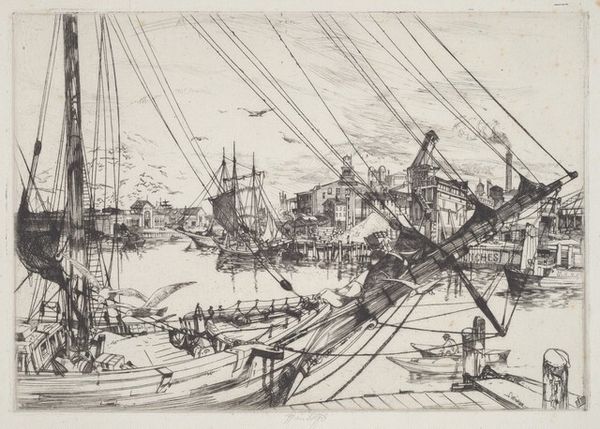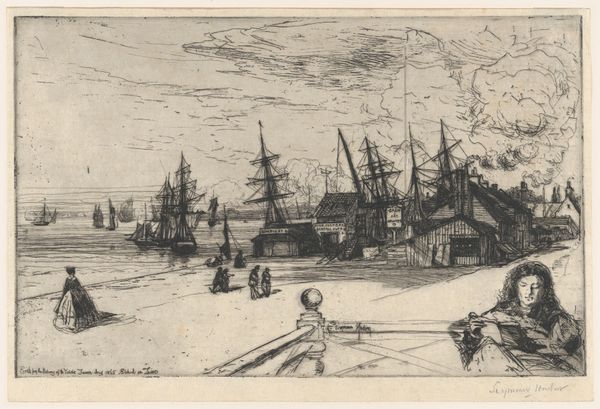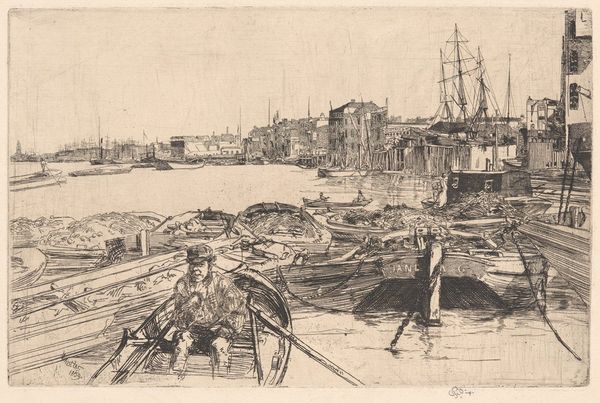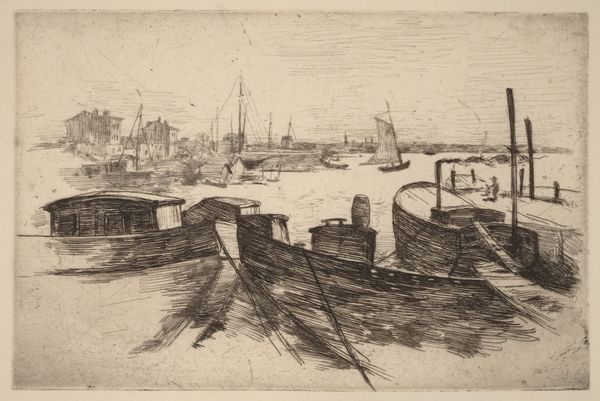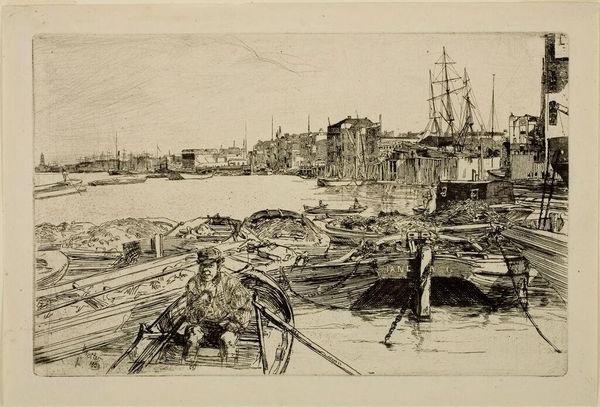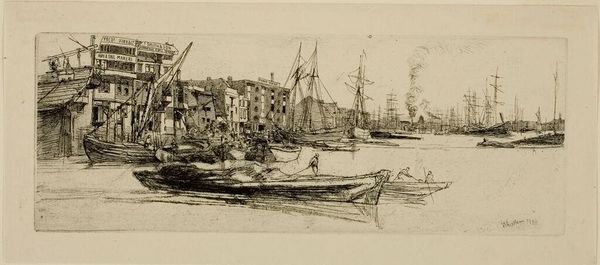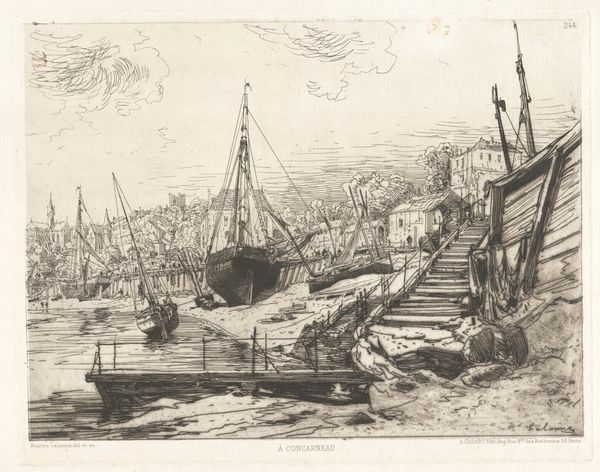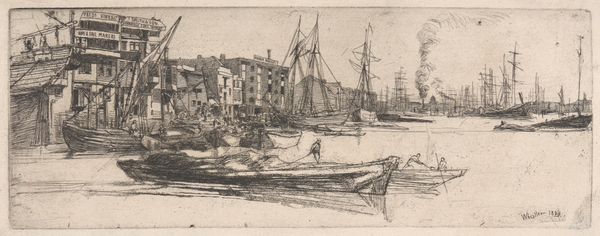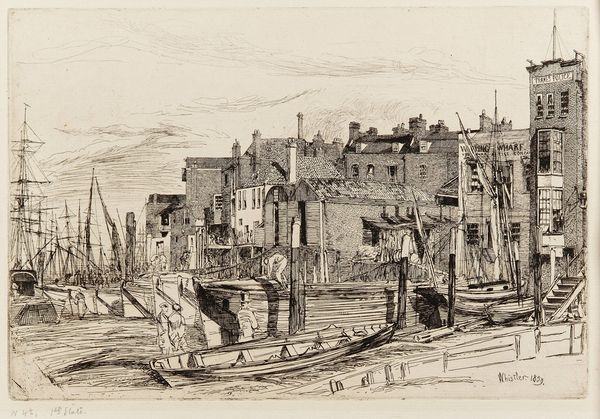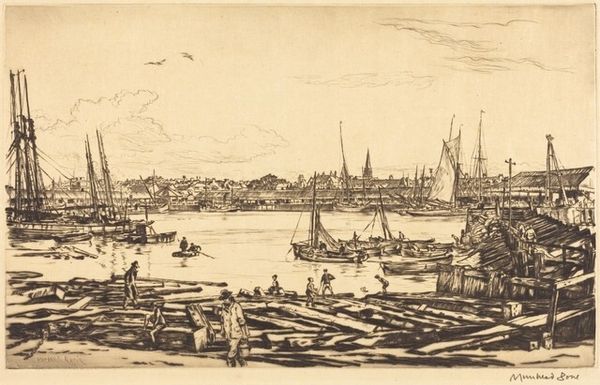
drawing, print, etching, ink
#
drawing
#
ink drawing
# print
#
pen sketch
#
etching
#
landscape
#
ink
#
line
#
cityscape
#
realism
Dimensions: plate: 11.43 x 18.42 cm (4 1/2 x 7 1/4 in.) sheet: 22.23 x 30.8 cm (8 3/4 x 12 1/8 in.)
Copyright: National Gallery of Art: CC0 1.0
Curator: At first glance, there's an undeniable melancholy. It’s intricate but feels muted, like a memory viewed through a scrim. Editor: That’s an astute observation. The artwork is titled "Mission Street Wharf (small plate)," an etching and ink drawing created in 1917 by John W. Winkler. Its depiction of the urban landscape relies heavily on line work. Curator: The linear composition is fascinating, all those overlapping lines creating a sense of depth but also… entrapment? It’s as if the city itself is a net, drawing in all the boats and figures. Is there an awareness of precarity there, maybe mirroring anxieties of the time? Editor: Perhaps. There’s a concentration on structure; notice how the artist repeats and echoes shapes—the masts, the rigging, the architecture. This use of recurring forms can create a subtle, underlying sense of order even within chaos. The crisscrossing creates an interwoven field. Curator: Exactly! An order imposed perhaps, against a backdrop of uncertainty. I see it in the silhouetted figures on the docks, almost spectral. They represent humanity clinging to familiar routines amidst industrialization and societal change. This is especially interesting given the date. Editor: Interesting to think of those figures representing resilience or perhaps even the suppression of it. To me, they seem integrated— almost woven— into the environment. Curator: Yes, because urban environments are never inert. The city and harbor become actors too. They speak through architectural styles—these heavy buildings with repeating arches and blocky structures become symbolic anchors. There's the psychological weight of architecture, too; it frames our experience, constrains or liberates. It makes this harborscape, perhaps, an experience to which we've been destined by location and memory. Editor: Ultimately, Winkler presents a study of form and the dynamic possibilities of line. The artist offers a layered composition open for continual interpretation. Curator: It reveals, even within something as apparently quotidian as a cityscape, the presence of an echoing cultural continuity. Editor: And Winkler achieves all this through subtle gestures within a structured framework.
Comments
No comments
Be the first to comment and join the conversation on the ultimate creative platform.
